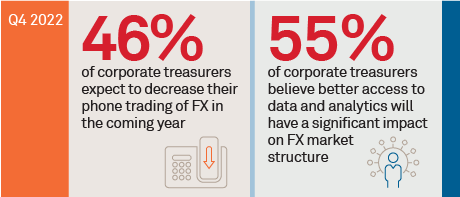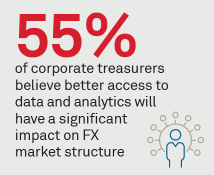
Corporate treasury departments are thinking more strategically about trading FX, a change from the past when it was largely seen as a cost of doing business. While certain corporates have built sophisticated FX trading capabilities, others have yet to make the same investments. Those looking to make strategic improvements are striving to build a more robust operational and data infrastructure before indulging in more advanced projects, such as execution algorithm (algo) use and transaction cost analysis (TCA).
This new focus couldn’t be more timely. 2022 has been a volatile year across multiple asset classes, and FX hasn’t been immune. Corporates that are natural end users of commodities—for example, airlines, utilities and agricultural firms—tend to have sophisticated trading desks for the relevant asset class. After all, running an airline without an effective capability to hedge volatile fuel costs can negatively affect the business and profitability longer term. Many corporates saw the negative impact of that volatility on earnings and that macro volatility is also causing uncertainty in corporates’ cash flows. The result is that some are showing willingness to use FX derivatives to more effectively cope with this environment. While hedging all FX risk for a corporate is a diffcult challenge, shareholders and other stakeholders will want to ensure management has a focus on this important lever.
MethodologyIn Q2 2022, Coalition Greenwich interviewed 96 FX traders globally as a part of its annual Market Structure & Trading Technology Study. Respondents were asked a series of qualitative and quantitative questions examining their FX trading behavior, usage of execution platforms and the tools used to manage their workflows.

